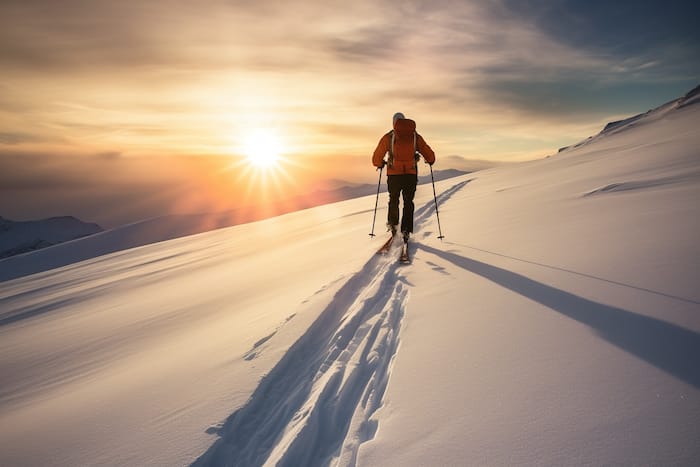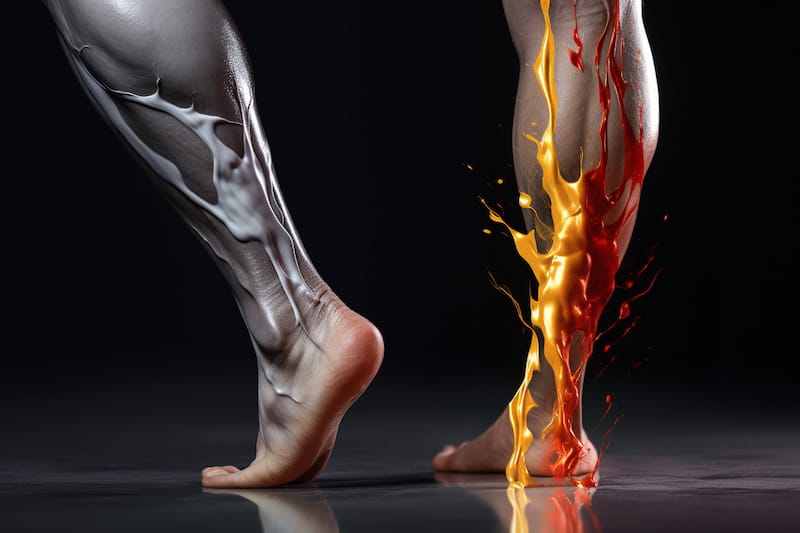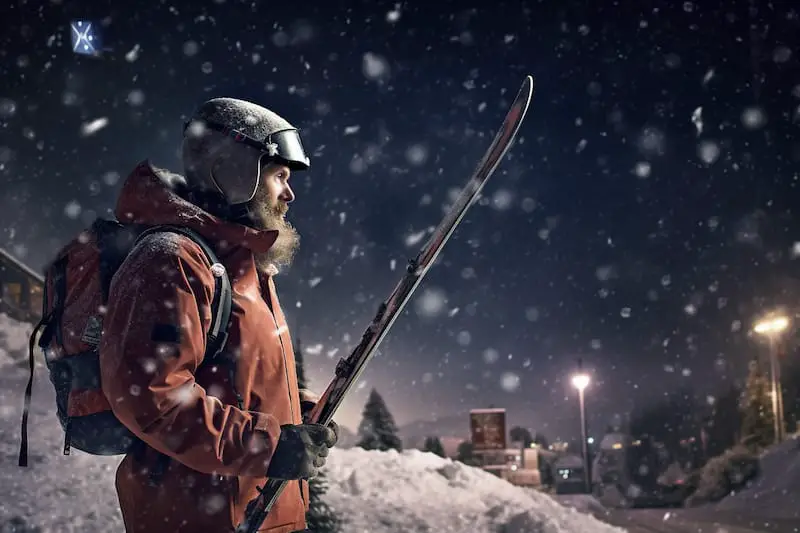The thrilling activity of backcountry skiing is not only satiates the adventure cravings but also provides an excellent full-body workout. However, one question that often arises is, “How many calories do I burn when backcountry skiing?” Understanding the energy expenditure during this strenuous activity can aid in managing your fitness goals and ensuring optimal health. In this article, we delve into the calorie-burning aspect of backcountry skiing, explaining the science behind it and how you can calculate it for yourself.
Calculation explanation
The calculation for the number of calories burned during backcountry skiing is based on a concept called the Metabolic Equivalent of Task (MET). The MET value is a measure of the amount of energy a physical activity requires. Each activity has a MET value assigned to it. For backcountry skiing, the MET value is 4.8.
Here’s how the calculation works:
- Weight Conversion (if necessary): The user’s weight is needed in kilograms for the calculation. If the weight is provided in pounds, we first convert it to kilograms. One pound is approximately equal to 0.453592 kilograms.
- MET Calculation: We then multiply the user’s weight (in kilograms) with the MET value for backcountry skiing. This gives us the amount of calories burned per minute if the person were to ski.
- Duration Adjustment: The calculation so far gives us the calories burned per minute. To find the total calories burned, we multiply this value by the duration of the activity (in minutes).
In mathematical terms, the formula is:
(Weight in kg) * MET value * 0.0175 * (Duration in minutes)So if you weigh 180 lbs (which is about 81.65 kg when converted) and you go backcountry skiing for 30 minutes, the calculation would be:
81.65 kg * 4.8 MET * 0.0175 * 30 minutes = 206 kcalThis means that a person weighing 180 lbs would burn approximately 405 calories from 60 minutes of backcountry skiing.
Please note that these calculations are estimates and the actual number of calories burned can vary based on factors like individual metabolism and the specific conditions of the activity. When backcountry skiing you can face tough conditions which will increase the burned calories per hour.
Understanding Calories and Energy Expenditure
Before we delve into the specifics of calories burned during backcountry skiing, it’s essential to understand what a calorie is and how the body burns it. A calorie is a unit of energy. In the context of food and exercise, calories refer to the amount of energy consumed through eating and drinking and the amount of energy used by physical activity.
Our bodies constantly burn calories for vital processes such as breathing, circulating blood, and regulating body temperature – this is known as your basal metabolic rate. Any physical activity you do, from walking to your car to backcountry skiing, requires additional energy and thus burns additional calories.
The amount of calories burned during physical activities depends on several factors, including the type of activity, its intensity, its duration, and the individual’s weight. More demanding activities like backcountry skiing typically burn more calories than less strenuous activities like walking.
In the next section, we’ll explore how to calculate the number of calories burned during backcountry skiing using a concept called the Metabolic Equivalent of Task (MET).
The Concept of MET (Metabolic Equivalent of Task)
To understand how many calories are burned during an activity like backcountry skiing, we use a measure known as the Metabolic Equivalent of Task (MET). The MET value represents the energy cost of physical activities and is defined as the ratio of metabolic rate during a specific physical activity to a reference metabolic rate.
Each activity has a specific MET value, which provides an estimate of the intensity of the activity. For instance, sitting quietly has a MET value of 1, while activities like running or cycling have higher MET values. For backcountry skiing, the MET value is 4.8, reflecting its status as a high-intensity activity.
Calculating Calories Burned During Backcountry Skiing
Now that we understand MET, we can use it to calculate the number of calories burned during backcountry skiing. Here’s the formula:
(Weight in kg) * MET value * 0.0175 * (Duration in minutes)Let’s break down this formula:
- Weight in kg: This is your weight in kilograms. If your weight is in pounds, you’ll need to convert it to kilograms (1 pound is approximately 0.453592 kilograms).
- MET value: This is the MET value for backcountry skiing, which is 4.8.
- 0.0175: This is a standard value used in this type of calculation to convert the result to calories per minute.
- Duration in minutes: This is the duration of your backcountry skiing session in minutes.
By multiplying these values together, you can estimate the number of calories burned during backcountry skiing. For example, if you weigh 180 pounds (approximately 81.65 kilograms when converted) and you go backcountry skiing for 30 minutes, the calculation would be:
81.65 kg * 4.8 MET * 0.0175 * 30 minutes = 206 kcalSo, a 180-pound individual would burn approximately 206 calories during a 30-minute session of backcountry skiing.
Read how to avoid windburn while skiing.
Factors That Affect Calorie Burn in Backcountry Skiing
It’s important to note that the calculation above provides an estimate. The actual number of calories you burn can be influenced by several factors:
- Weight: Heavier individuals tend to burn more calories than lighter ones because their bodies require more energy to perform the same task.
- Intensity: More vigorous skiing, such as tackling steeper slopes or difficult terrains, can burn more calories.
- Duration: The longer your skiing session, the more calories you’ll burn.
- Metabolism: Some people have a faster metabolic rate than others, which means they burn calories more quickly.
- Conditions: Factors like snow conditions, weather, and the weight of your gear can also affect how many calories you burn.


